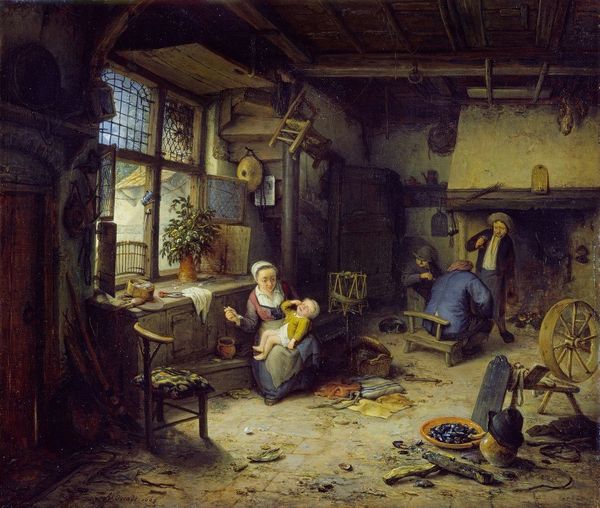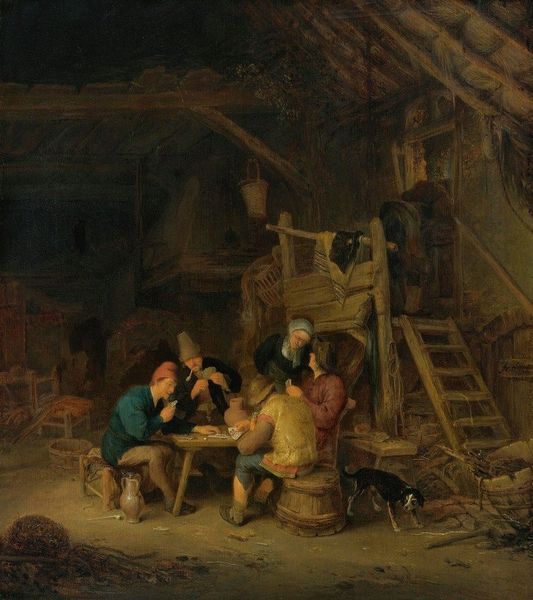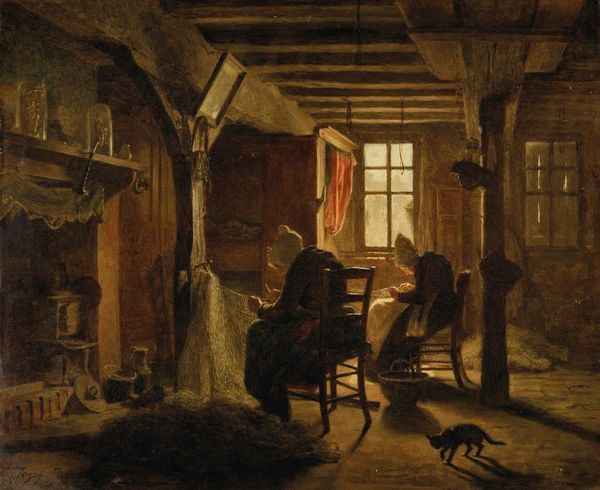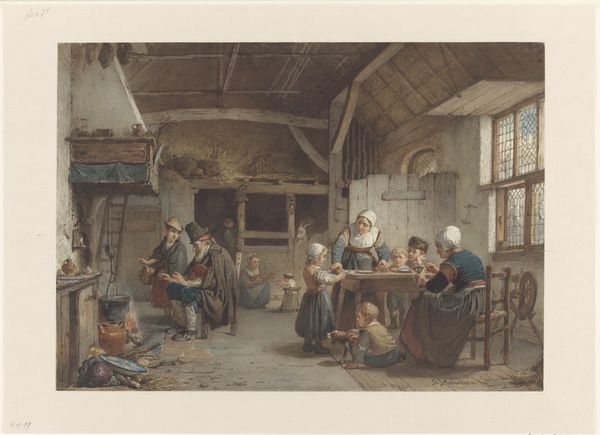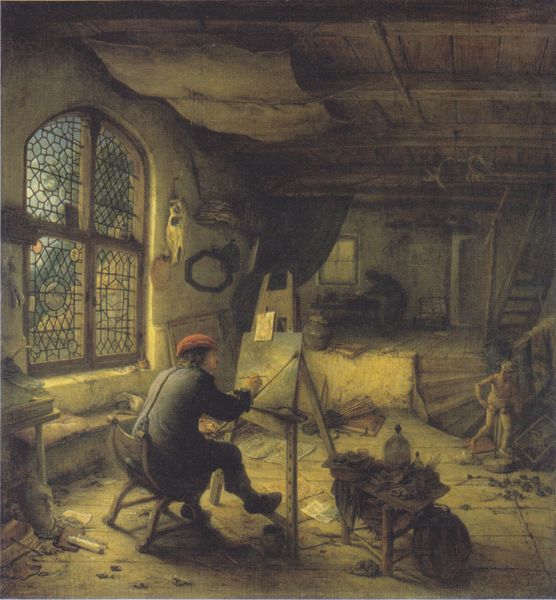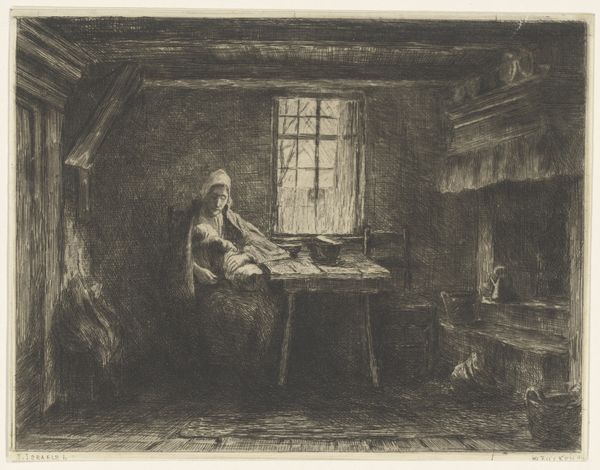
watercolor
#
portrait
#
neoclacissism
#
figuration
#
watercolor
#
genre-painting
#
history-painting
Dimensions: height 326 mm, width 396 mm
Copyright: Rijks Museum: Open Domain
Curator: Here we have Tethart Philip Christian Haag's watercolor from between 1747 and 1812, “The Holy Family in Joseph’s Workshop,” here at the Rijksmuseum. Editor: Oh, that’s lovely! It's suffused with a gentle domesticity, a feeling of warmth that contrasts with the stark reality of, well, carpentry. There’s something comforting and intimate about it. Curator: Comfort is definitely key, I think, especially considering the neoclassical elements combined with this everyday genre painting feel. Look at the scene: Joseph's at his workbench, bathed in a very deliberate light from that high window, and Mary and the child—presumably Jesus—are poring over what appears to be scripture. Editor: It's like a hidden sanctuary, isn't it? Even though the setting is humble—all those exposed beams and rudimentary tools. Do you think it's making a statement about the holiness of labor or perhaps subtly humanizing these iconic figures? Curator: I lean toward the latter. During this period, there was a clear movement in art and philosophy towards enlightenment values of representing virtue in common subjects. Representing Joseph doing honest work really exemplifies those beliefs, while still subtly signaling that holiness you identified, through use of light and more conventional Madonna-esque poses. Editor: Absolutely. The play of light almost feels like a halo around them, especially Mary. It's also clever how he integrates history and genre so neatly into this supposedly ordinary workshop scene. But tell me, does it strike you as sentimental? Curator: It’s a balancing act, definitely walking the line. Haag walks it quite gracefully I’d say; I find that this artwork speaks to the political undercurrent of the Neoclassical era but it also brings the untouchable closer to everyday life. What are your final thoughts? Editor: I find it's ultimately very relatable, despite the obviously elevated subject. It really does inspire a sense of peaceful contemplation on the intersection of family, faith, and simple craft. Curator: Yes, Haag has captured something profound within the mundane; something really special to ponder even today.
Comments
No comments
Be the first to comment and join the conversation on the ultimate creative platform.



